Paint
Navigation
Defect and Repair
|
Painting on brickwall
|
Defect
|
Repair
|
 |
Alligatoring
|
Removing the paint & starting afresh or by allowing it to dry thoroughly & sanding down, filling & recoating the surfaces. |
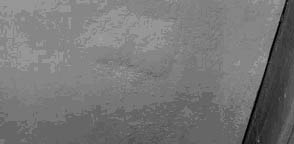 |
Blistering
|
When isolated blistering has occurred, sand down the paint film, clean and repaint. In the case of severe blistering, clean and allow surfaces to dry and repaint. |
|
Bittiness
|
It is advisable to work under dust free conditions. Often a fine spray of water on the floor will prevent dust from rising. Brushes should be thoroughly clean and paint not allowed to dry out on the bristles. | |
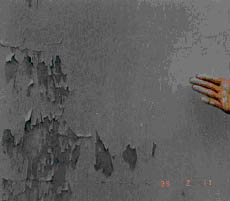 |
Chalking
|
Where slight chalking has occurred, wipe of the loose particles and then repaint. In the case of heavy chalking, remove the paint film completely, clean the surface with water and allow it to dry overnight before repainting. |
|
Cissing/ Crawling
|
Allow the paint film to dry thoroughly. Sand down, clean and then repair. | |
|
Cracking
|
Remove the paint film completely, clean the surface and repaint with the recommended paint. | |
 |
Discoloration
|
Clean the surface thoroughly before repainting. |
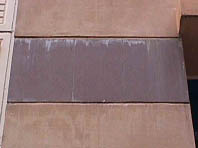 |
Efflorescence
|
a. The old peeling should be thoroughly scraped off. The efflorescence can then be brushed from the surface whenever the salts appear until finally no more efflorescence is evident. It is suggested that the area involved be given a wash of 10% phosphoric acid, allowed to stand for 10-15minutes and then washed down with water. It should then be allowed to stand for 2-3 days to ensure that no more growth develops. Apply 2 coats of a good acrylic paint which will give best results to surfaces where efflorescence has occurred.
b. Hairline cracks on the wall should be patch up. Repaint on receiving surface with moisture content not exceeding 6%. |
 |
Fading
|
New render is best primed with an alkali resistant sealer. Only quality paints should be used and when any doubt exists, the advices of paint chemist should be sought. |
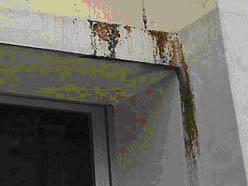 |
Fungus Growth
|
a. Remove dirt & algae by high pressure water jetting.
b. Treat the infected surfaces with fungicidal wash so as to kill the fungal/algae spore and roots. c. Re-paint with more algae resistant paint. |
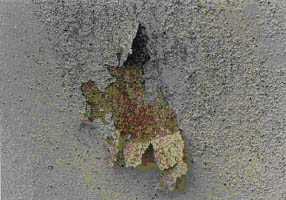 |
Peeling/ Flaking
|
Scrape off as much paint as possible from the wall using stainless steel brush; then wash the powdery surfaces with 5% solution of muriatic acid or undiluted vinegar. Rinse thoroughly and let dry. When it is dry, repaint the entire surface. |
|
Sagging
|
Remove the paint film, sand down clean and repaint. | |
|
Saponification
|
Where saponification has occurred to the extent that the soapy solution appears, it can easily be removed by washing with water because the saponified oil is in fact water soluable. Where the effect is not so severe & has merely softened the film, a strong solvent such as xyol, acetone will soften the paint further to the stage where it can be stripped off. The affected areas should be allowed to thoroughly dry out and a coat of alkali resistant cement sealer applied prior to finishing in the usual manner. | |
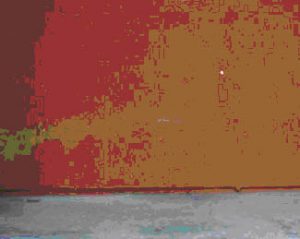 |
Yellowing
|
Remove paint film, sand, clean and repaint. |
Note: For more defects, please refer to the Defect Library.